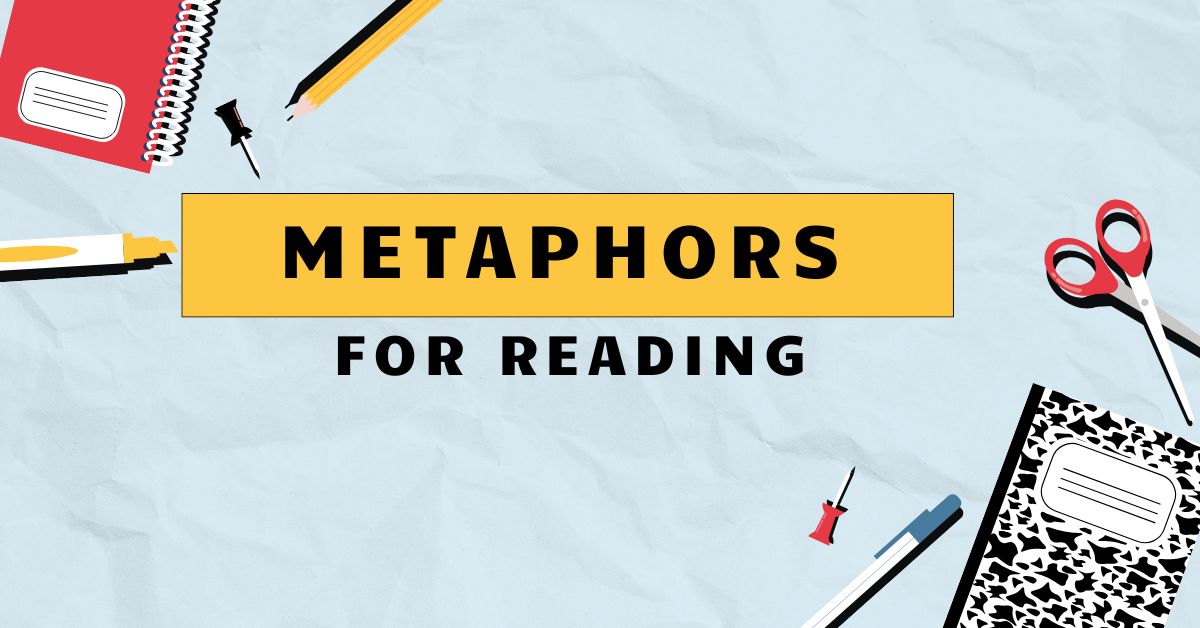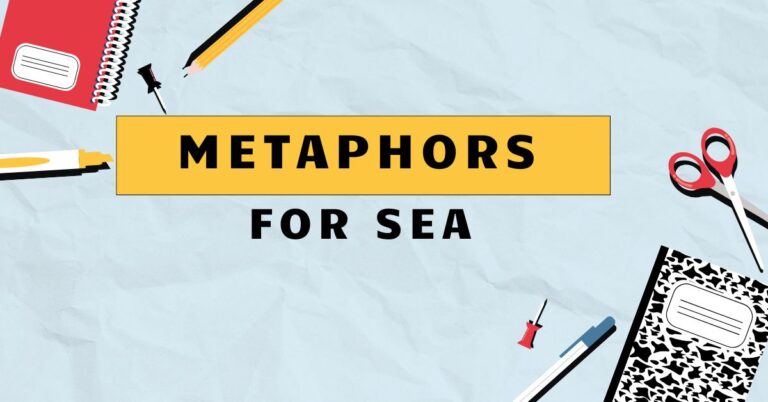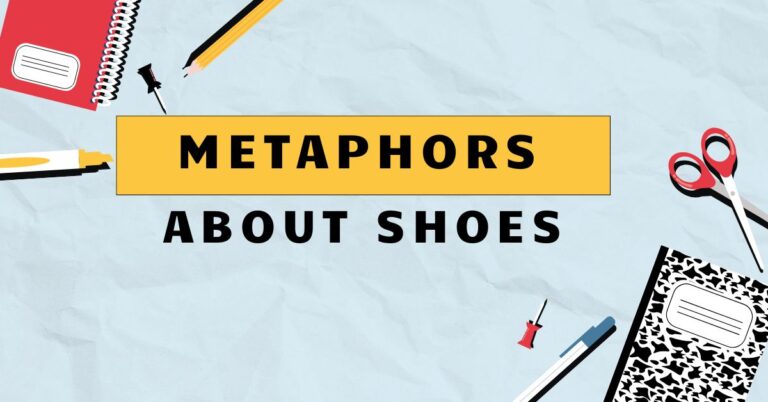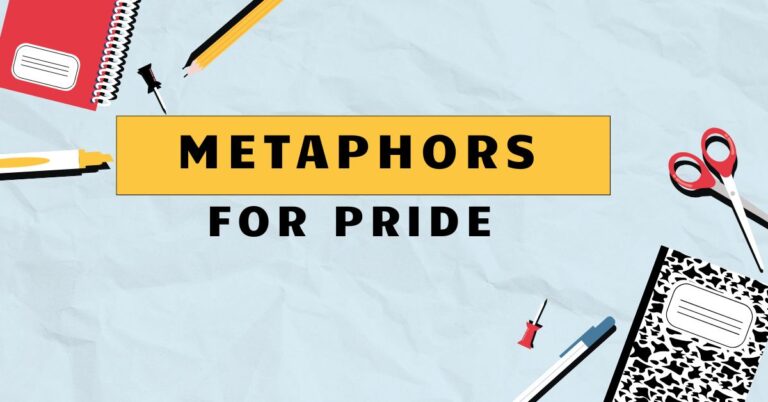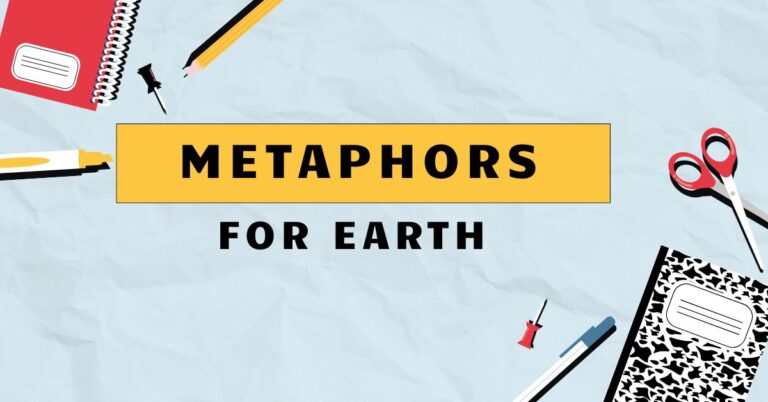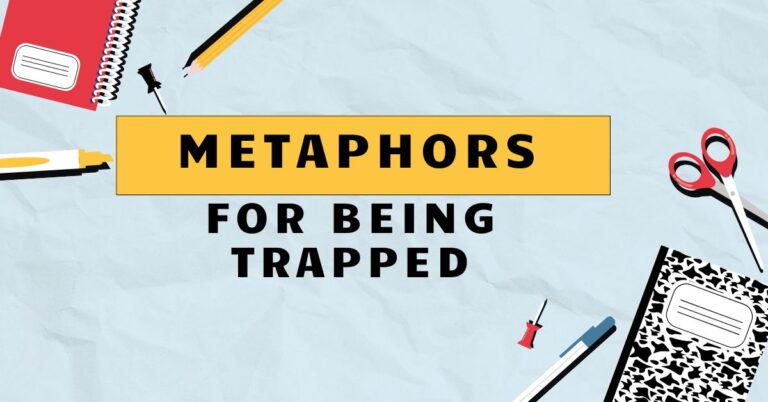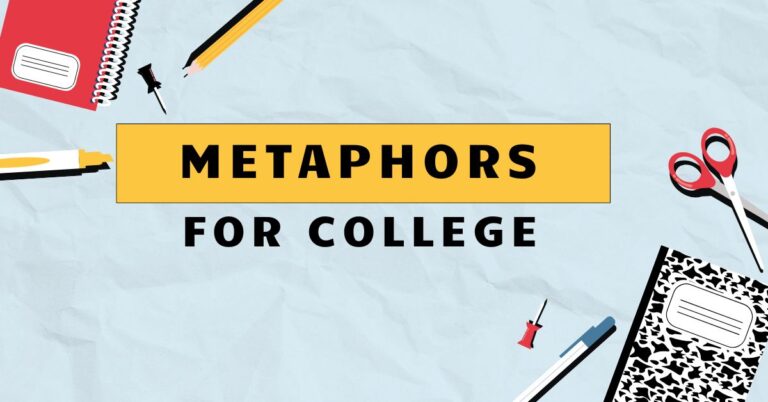33 Reading Metaphors: A Comprehensive Guide
Metaphors are powerful tools in language, allowing us to understand abstract concepts by relating them to more concrete and familiar ideas. When applied to reading, metaphors can illuminate the multifaceted nature of this activity, revealing its potential for exploration, discovery, and personal growth.
Understanding these metaphors enhances our appreciation of reading and improves our ability to analyze literature. This guide is designed for students, educators, and anyone interested in exploring the rich landscape of reading metaphors.
It will cover definitions, structural breakdowns, types, examples, usage rules, common mistakes, practice exercises, and advanced topics related to reading metaphors.
Table of Contents
- Definition of Metaphors for Reading
- Structural Breakdown of Reading Metaphors
- Types and Categories of Reading Metaphors
- Examples of Reading Metaphors
- Usage Rules for Reading Metaphors
- Common Mistakes with Reading Metaphors
- Practice Exercises
- Advanced Topics in Reading Metaphors
- Frequently Asked Questions (FAQ)
- Conclusion
Definition of Metaphors for Reading
Ametaphoris a figure of speech that directly compares two unrelated things without using “like” or “as.” It asserts that one thingisanother, creating a deeper understanding and a more vivid image. Metaphors for reading describe the act of reading by comparing it to something else, highlighting certain aspects of the experience.
This can include comparing reading to a journey, a conversation, a window, or a mirror. By using metaphors, we move beyond the literal definition of reading and explore its symbolic and emotional dimensions.
The function of metaphors for reading is to provide a richer and more nuanced understanding of the activity. They allow us to appreciate the transformative power of books, the intellectual stimulation they offer, and the emotional connections they foster.
These metaphors can appear in literary criticism, educational discourse, and everyday conversations about books. Understanding the context in which a metaphor is used helps us interpret its intended meaning and appreciate its impact.
Structural Breakdown of Reading Metaphors
A typical metaphor consists of two main elements: thetenorand thevehicle. The tenor is the subject being described (in this case, reading), and the vehicle is the object or concept it is being compared to.
The connection between the tenor and the vehicle is what creates the metaphorical meaning. For example, in the metaphor “Reading is a journey,” reading is the tenor, and journey is the vehicle.
The shared characteristics (exploration, discovery, progress) create the metaphorical link.
The effectiveness of a metaphor depends on the strength of the connection between the tenor and the vehicle. A strong metaphor resonates with the reader, offering a fresh perspective and a deeper understanding.
A weak metaphor, on the other hand, may be confusing or uninspired. Analyzing the structural elements of a reading metaphor helps us understand its intended meaning and assess its effectiveness.
Consider, for example, the extended metaphor, where a single metaphor is drawn out across multiple lines or paragraphs. This allows for a more complex and detailed exploration of the relationship between reading and the chosen vehicle.
Types and Categories of Reading Metaphors
Reading as a Journey
This category encompasses metaphors that compare reading to a physical or metaphorical journey. The book is seen as a map, the reader as an explorer, and the story as a path leading to new discoveries.
These metaphors emphasize the transformative and adventurous aspects of reading.
Reading as a Conversation
These metaphors highlight the interactive nature of reading, portraying it as a dialogue between the reader and the author. The book is seen as a voice, the reader as a listener, and the act of reading as a form of communication.
These metaphors emphasize the intellectual and emotional exchange that takes place during reading.
Reading as a Window
This category includes metaphors that describe reading as a way to see the world from a different perspective. The book is seen as a window, the reader as an observer, and the story as a view into another world.
These metaphors emphasize the broadening and enlightening aspects of reading.
Reading as a Mirror
These metaphors portray reading as a way to reflect on oneself and one’s own experiences. The book is seen as a mirror, the reader as a reflection, and the story as a representation of human nature.
These metaphors emphasize the introspective and self-reflective aspects of reading.
Reading as Nourishment
This category views reading as essential sustenance for the mind and soul. The book is food, the reader is the consumer, and the story is the nourishment.
These metaphors emphasize the enriching and vitalizing aspects of reading.
Examples of Reading Metaphors
The following tables provide extensive examples of reading metaphors, categorized by type. Each example is designed to illustrate the different ways in which reading can be metaphorically represented.
Examples of Reading as a Journey
The following table provides a variety of examples showcasing the metaphor of reading as a journey. Note the different ways in which the concept of ‘journey’ is invoked, from physical travel to intellectual exploration.
| Metaphor | Explanation |
|---|---|
| Reading is a journey into the unknown. | Reading allows us to explore unfamiliar territories and ideas. |
| Books are maps to new worlds. | Books guide us through imagined landscapes and cultures. |
| Each chapter is a step forward on a long road. | Reading progresses gradually, with each chapter contributing to the overall experience. |
| The story is a winding path full of surprises. | The narrative takes unexpected turns, keeping the reader engaged. |
| Reading is an expedition into the author’s mind. | We explore the author’s thoughts, feelings, and perspectives. |
| The novel was a voyage across uncharted seas of emotion. | The book took the reader on an emotional and unpredictable experience. |
| Diving into the book, she embarked on an adventure. | Reading provides the thrill and excitement of an adventure. |
| He navigated the pages like a seasoned explorer. | The reader skillfully moves through the text, understanding its complexities. |
| The book opened a portal to a different era. | Reading transports the reader to another time period. |
| She found herself lost in the labyrinth of the plot. | The intricate plot of the book captivated and confused the reader. |
| Reading is a quest for knowledge and understanding. | It describes reading as an active pursuit of information and insight. |
| The book was a rollercoaster of emotions. | Reading is a thrilling and emotional experience with many highs and lows. |
| He followed the narrative thread like a trail of breadcrumbs. | The reader follows the storyline step by step, uncovering the plot. |
| The pages became a gateway to another realm. | Reading transports the reader to a different place or dimension. |
| She was traveling through a landscape crafted by words. | The reader experiences the setting of the book as if it were a real place. |
| The story was a trek through the wilderness of the human heart. | Reading provides insight into the complexities of human emotions. |
| He charted a course through the dense text. | The reader carefully analyzes and understands the complex writing. |
| The novel was a safari into the exotic world of the characters. | Reading allows the reader to explore the lives and experiences of the characters. |
| Each book is a new continent to explore. | Each book offers a new world of information and experiences to discover. |
| Reading is like climbing a mountain, with a rewarding view at the summit. | Reading involves effort and persistence, but leads to a satisfying conclusion. |
| She wandered through the narrative like a tourist in a foreign city. | She explored the story with curiosity and openness, discovering new aspects along the way. |
| The book was a pilgrimage to the heart of the author’s message. | Reading can be a profound experience that leads to a deeper understanding of the author’s intent. |
| He traversed the pages, searching for hidden treasures of wisdom. | The reader actively seeks knowledge and insight within the text. |
Examples of Reading as a Conversation
The following table illustrates the metaphor of reading as a conversation. The examples highlight the interactive and communicative aspects of reading, where the reader engages with the author’s ideas and perspectives.
| Metaphor | Explanation |
|---|---|
| Reading is a conversation with the author. | Reading involves engaging with the author’s ideas and perspectives. |
| The book speaks to the reader. | The book conveys its message and insights to the reader. |
| The reader engages in a dialogue with the text. | The reader actively questions, interprets, and responds to the content. |
| The author’s voice resonates through the pages. | The author’s unique style and perspective are evident in the writing. |
| Reading is a back-and-forth exchange of ideas. | Reading involves a dynamic interaction between the reader and the text. |
| The book whispered secrets to those who listened closely. | Careful and attentive reading reveals hidden meanings and insights. |
| He argued with the author’s point of view in his mind. | The reader critically analyzes and challenges the author’s ideas. |
| The text invited her to ponder its deeper meanings. | The reading material encourages the reader to think critically and reflectively. |
| Reading is like having a discussion with a wise mentor. | The reader gains knowledge and guidance from the author’s words. |
| The pages offered a silent debate on the nature of truth. | The book presents different perspectives and invites the reader to consider them. |
| The story posed questions that lingered in her mind. | The narrative prompts the reader to think deeply about the themes and issues raised. |
| Reading is an ongoing discourse between past and present. | Reading connects the reader to historical ideas and contemporary contexts. |
| The author’s words sparked a fire in his imagination. | The text inspired the reader to think creatively and innovatively. |
| She found herself in a lively debate with the characters. | The reader becomes emotionally invested in the characters and their conflicts. |
| The book challenged her assumptions and broadened her horizons. | Reading encourages the reader to question their beliefs and consider new perspectives. |
| Every sentence was a thoughtful response to a silent question. | The writing is deliberate and purposeful, addressing unspoken issues. |
| Reading is a collaborative effort between the writer and the reader. | Both the author and the reader contribute to the meaning and interpretation of the text. |
| The text engaged him in a silent, intellectual dance. | The reader actively interprets and responds to the nuances of the writing. |
| The book offered a platform for diverse voices to be heard. | Reading exposes the reader to different perspectives and experiences. |
| Reading is a symposium of ideas, each contributing to a greater understanding. | The reader synthesizes different viewpoints to gain a comprehensive knowledge. |
| She listened intently to the author’s narrative, absorbing every detail. | The reader pays close attention to the author’s storytelling, fully engaging with the text. |
| The book prompted a conversation within herself, leading to profound insights. | Reading can lead to self-reflection and a deeper understanding of one’s own thoughts and feelings. |
| He found himself in a silent dialogue, questioning and answering the text’s propositions. | The reader actively engages with the material, challenging assumptions and seeking understanding. |
Examples of Reading as a Window
The following table demonstrates the use of ‘window’ metaphors in relation to reading. These metaphors emphasize the idea of reading as a means of seeing and understanding different perspectives and worlds.
| Metaphor | Explanation |
|---|---|
| Reading is a window to the world. | Reading allows us to see different cultures, perspectives, and experiences. |
| Books are portals to other realities. | Books transport us to imagined worlds and different time periods. |
| Each page is a glimpse into another life. | Reading allows us to understand the lives and experiences of others. |
| The story provides a clear view of the human condition. | Reading offers insight into the complexities of human nature. |
| Reading opens up new horizons. | Reading broadens our understanding and expands our knowledge. |
| The book offered a panoramic view of history. | Reading provides a comprehensive understanding of past events. |
| She peered through the pages into a different era. | Reading allows the reader to experience a different time period. |
| The novel was a looking glass into the soul. | Reading provides insight into the inner workings of human emotions. |
| Reading offers a telescope to view distant stars of knowledge. | Reading allows the reader to explore complex concepts and ideas. |
| The book was a crystal ball, revealing potential futures. | Reading provides insight into possible outcomes and consequences. |
| Through the pages, he saw a world he never knew existed. | Reading exposes the reader to new and unfamiliar experiences. |
| Reading is like holding a prism to the light of understanding. | Reading allows the reader to see things from multiple perspectives. |
| The book offered a peephole into the lives of ordinary people. | Reading provides insight into the everyday experiences of others. |
| She gazed through the text, catching glimpses of alternative realities. | Reading allows the reader to imagine and explore different possibilities. |
| The story provided a clear lens through which to view societal issues. | Reading offers a critical perspective on important social problems. |
| Each chapter was a windowpane revealing a different facet of the truth. | Reading allows the reader to piece together a comprehensive understanding. |
| Reading is like looking through a microscope at the intricate details of life. | Reading allows the reader to examine and understand the complexities of existence. |
| The book was a periscope, allowing her to see beyond her own limitations. | Reading expands the reader’s perspective and understanding. |
| She found herself looking through a keyhole into the secrets of the universe. | Reading provides access to knowledge and mysteries that are otherwise hidden. |
| Reading is like holding up a mirror to society, reflecting its strengths and flaws. | Reading offers a critical and reflective view of the world around us. |
| Through the pages, she glimpsed the vibrant tapestry of human experience. | Reading exposes the reader to a rich and diverse range of human lives and stories. |
| The book served as a window onto the author’s inner world, revealing their deepest thoughts and feelings. | Reading allows the reader to connect with the author on a personal and emotional level. |
| He used the book as a window to escape the confines of his own reality, immersing himself in the story. | Reading provides an opportunity to temporarily leave one’s own life and explore different worlds. |
Examples of Reading as a Mirror
The following table presents metaphors that use the “mirror” concept to describe reading. These metaphors emphasize how reading can reflect our own experiences, emotions, and identities back at us.
| Metaphor | Explanation |
|---|---|
| Reading is a mirror reflecting our own experiences. | Reading allows us to see our lives reflected in the stories we read. |
| Books are reflections of the human soul. | Books capture the essence of human emotions, thoughts, and experiences. |
| The story reflects the reader’s own struggles and triumphs. | Reading can provide validation and understanding of personal challenges. |
| Reading allows us to see ourselves in the characters. | We identify with the characters and their experiences, gaining new insights. |
| The book holds up a mirror to society. | Reading can reveal the truths and flaws of the world around us. |
| She saw her own fears and desires reflected in the pages. | Reading can bring unconscious emotions and motivations to the surface. |
| The novel was a looking glass, revealing her true self. | Reading can lead to self-discovery and a deeper understanding of one’s identity. |
| Reading provides a lens through which to examine our own lives. | Reading allows us to analyze and understand our own experiences more clearly. |
| The book served as a reflection of his past. | Reading can trigger memories and reflections on past experiences. |
| She found her own values and beliefs mirrored in the story. | Reading can reinforce and validate our own principles and convictions. |
| The text reflected the complexities of human relationships. | Reading can provide insight into the dynamics of interpersonal connections. |
| Reading is like looking into a pond and seeing your own reflection staring back. | Reading can provide a moment of introspection and self-awareness. |
| The book offered a distorted mirror, challenging her perceptions of reality. | Reading can challenge our assumptions and force us to reconsider our beliefs. |
| She found herself reflected in the protagonist’s journey. | Reading can provide a sense of connection and empathy with others. |
| The story was a mirror reflecting the collective consciousness of a generation. | Reading can capture the zeitgeist and reflect the shared experiences of a particular time. |
| Each character was a reflection of a different aspect of her personality. | Reading can provide insight into the different facets of our own character. |
| Reading is like holding up a mirror to your soul, revealing hidden truths. | Reading can bring unconscious emotions and motivations to the surface. |
| The book was a reflection of his own struggles with identity and belonging. | Reading can provide comfort and understanding for those grappling with personal issues. |
| She found solace in seeing her own experiences mirrored in the pages. | Reading can provide a sense of validation and connection for those who feel isolated. |
| Reading is a reflective pool where we see our own hopes and dreams mirrored back at us. | Reading can inspire and motivate us to pursue our goals and aspirations. |
| Through the book, she saw a reflection of her potential, urging her to strive for greatness. | Reading can empower us to recognize and develop our own strengths and talents. |
| He used the book as a mirror to examine his own prejudices and biases, seeking to become a better person. | Reading can promote self-awareness and encourage us to confront our own flaws. |
| The story was a reflection of humanity’s capacity for both good and evil, prompting introspection. | Reading can challenge us to consider complex moral issues and our own roles in the world. |
Usage Rules for Reading Metaphors
When using metaphors for reading, it’s essential to ensure they are appropriate and effective. Here are some guidelines:
- Clarity: The metaphor should be easily understood and should enhance, not obscure, the meaning.
- Relevance: The comparison should be relevant to the aspect of reading you want to highlight.
- Originality: While common metaphors can be effective, strive for originality to make your writing more engaging.
- Consistency: If using an extended metaphor, maintain consistency throughout the text.
- Context: Consider the audience and the context in which the metaphor is used.
Consider the cultural context as well; a metaphor that resonates in one culture might not in another. Overuse of metaphors can also diminish their impact, so use them judiciously.
Common Mistakes with Reading Metaphors
One common mistake is using mixed metaphors, where the tenor is compared to two or more vehicles that don’t logically fit together. For example, “Reading is a journey that feeds the soul” mixes the journey and nourishment metaphors in a way that can be confusing.
Another mistake is usingclichéd metaphors, which are overused and lack impact. For example, “Reading is an escape” is a common metaphor, but it lacks originality.
Strive to find fresh and engaging ways to describe the experience of reading.
Incorrect Example: The book was a rollercoaster that opened a window to my soul.
Correct Example: The book was a rollercoaster of emotions.
Incorrect Example: Reading is a journey that nourishes the mind, but it can also be a minefield.
Correct Example: Reading is a journey that nourishes the mind.
Practice Exercises
Exercise 1: Identifying Reading Metaphors
Identify the reading metaphor in each sentence and explain its meaning.
| Question | Answer |
|---|---|
| 1. Reading is a key that unlocks new worlds. | Metaphor: Reading is a key. Meaning: Reading opens access to new knowledge and experiences. |
| 2. Books are bridges connecting us to different cultures. | Metaphor: Books are bridges. Meaning: Books facilitate understanding and connection between cultures. |
| 3. The story was a tapestry woven with intricate details. | Metaphor: Story is a tapestry. Meaning: The story is complex and rich in detail. |
| 4. Reading is food for thought. | Metaphor: Reading is food. Meaning: Reading nourishes the mind with ideas and information. |
| 5. The novel was a mirror reflecting society’s values. | Metaphor: Novel is a mirror. Meaning: The novel reflects and examines societal values. |
| 6. Reading is like diving into a deep ocean of knowledge. | Metaphor: Reading is diving. Meaning: Reading is an immersive experience that provides deep knowledge. |
| 7. Books are time machines, transporting us to different eras. | Metaphor: Books are time machines. Meaning: Books allow us to experience and learn about different time periods. |
| 8. Reading is a dance between the author and the reader. | Metaphor: Reading is a dance. Meaning: Reading is a collaborative and interactive experience. |
| 9. The pages of the book were a treasure map leading to wisdom. | Metaphor: Pages are a treasure map. Meaning: Reading leads to the discovery of valuable knowledge. |
| 10. Reading is a compass guiding us through the complexities of life. | Metaphor: Reading is a compass. Meaning: Reading provides direction and understanding in life. |
Exercise 2: Creating Reading Metaphors
Create your own reading metaphor based on the given prompts.
| Prompt | Possible Answer |
|---|---|
| 1. Reading as a garden | Reading is a garden; each book is a seed that grows into a beautiful bloom of understanding. |
| 2. Reading as a symphony | Reading is a symphony; each word is a note that combines to create a harmonious and moving experience. |
| 3. Reading as a puzzle | Reading is a puzzle; each sentence is a piece that fits together to reveal the complete picture. |
| 4. Reading as a fire | Reading is a fire; it ignites the imagination and warms the soul with knowledge and inspiration. |
| 5. Reading as a river | Reading is a river; it flows through our minds, carrying us to new destinations and broadening our horizons. |
| 6. Reading as climbing a ladder | Reading is climbing a ladder; each book is a step that elevates us to higher levels of understanding. |
| 7. Reading as weaving a cloth | Reading is like weaving a cloth, where each thread of thought and word intertwines to create a rich and intricate design. |
| 8. Reading as building a house | Reading is like building a house, each book is a brick that contributes to a solid and lasting structure of knowledge. |
| 9. Reading as navigating a ship | Reading is like navigating a ship, where each book is a sea chart guiding us through uncharted waters of information. |
| 10. Reading as painting a picture | Reading is like painting a picture, where each word is a brushstroke that adds color and depth to the canvas of understanding. |
Exercise 3: Analyzing Reading Metaphors in Literature
Analyze the following literary excerpts and identify the reading metaphors used. Explain their significance in the context of the passage.
| Excerpt | Analysis |
|---|---|
| “A book is a portable magic.” – Stephen King | Metaphor: Book is magic. Significance: Highlights the transformative and enchanting power of reading. |
| “Reading is the sole means by which we slip, irrevocably, into another life.” – Joyce Carol Oates | Metaphor: Reading is slipping into another life. Significance: Emphasizes the immersive and transformative nature of reading. |
| “Books are the quietest and most constant of friends; they are the most accessible and wisest of counselors, and the most patient of teachers.” – Charles W. Eliot | Metaphor: Books are friends, counselors, and teachers. Significance: Portrays books as reliable sources of knowledge, guidance, and companionship. |
| “To read a book for the first time is to make a friend; to read it again is like meeting an old one.” – Chinese Proverb | Metaphor: Reading a book is making/meeting a friend. Significance: It suggests that reading is a personal and enriching experience, similar to forming a friendship. |
| “A book is a garden, an orchard, a storehouse, a party, a company by the way, a counselor, a multitude of counselors.” – Charles Baudelaire | Metaphor: Book is a garden, orchard, storehouse, etc. Significance: Highlights the multifaceted nature of reading and its ability to provide nourishment, abundance, and guidance. |
| “Reading is an active occupation. It is work of the mind, which we cannot avoid if we want to read with understanding.” – Mortimer J. Adler | Metaphor: Reading is work. Significance: Stresses the effort and mental engagement required for meaningful reading. |
| “The reading of all good books is like conversation with the finest men of past centuries.” – René Descartes | Metaphor: Reading is conversation. Significance: Suggests that reading allows us to engage with the ideas and perspectives of brilliant thinkers from the past. |
| “Books are the compasses and telescopes and sextants and charts which other men have prepared to help us navigate the dangerous seas of human life.” – Jesse Lee Bennett | Metaphor: Books are compasses, telescopes, sextants, and charts. Significance: Portrays books as essential tools for navigating the challenges and complexities of life. |
| “A book is a dream that you hold in your hand.” – Neil Gaiman | Metaphor: A book is a dream. Significance: Highlights the imaginative and transportive qualities of reading, suggesting it can take us to fantastical places. |
| “Books are the plane, and the train, and the road. They are the destination, and the journey. They are home.” – Anna Quindlen | Metaphor: Books are transportation and home. Significance: Emphasizes the all-encompassing nature of reading, providing both the means of travel and the ultimate destination. |
Advanced Topics in Reading Metaphors
At an advanced level, consider exploring the use of metaphors in literary criticism and theory. For example, post-structuralist critics often examine how metaphors shape our understanding of texts and influence interpretations.
Also, consider the cultural and historical contexts of reading metaphors. The metaphors used to describe reading can change over time, reflecting shifts in cultural values and attitudes towards knowledge and learning.
Further study could investigate the role of metaphors in shaping reading pedagogy and curriculum development. How do different metaphors influence teaching methods and learning outcomes?
Exploring these advanced topics can provide a deeper understanding of the complex relationship between language, thought, and reading.
Frequently Asked Questions (FAQ)
- What is the difference between a metaphor and a simile?
A metaphor directly compares two things by stating that one is the other, while a simile uses “like” or “as” to make a comparison. For example, “Reading is a journey” is a metaphor, while “Reading is like a journey” is a simile.
- Why are metaphors important in language?
Metaphors enhance understanding by relating abstract concepts to concrete ideas, making language more vivid and engaging. They also allow us to see things from a fresh perspective, fostering creativity and critical thinking.
- How can I improve my ability to identify metaphors?
Practice identifying comparisons that don’t use “like” or “as.” Pay attention to the context and consider the intended meaning of the comparison. Look for instances where a word or phrase is used in a non-literal sense.
- What are some common categories of metaphors?
Common categories include metaphors related to journeys, conversations, windows, mirrors, and nourishment. These categories provide a framework for understanding different types of metaphorical comparisons.
- How do I avoid using clichéd metaphors?
Strive for originality by brainstorming fresh and unexpected comparisons. Consider the specific aspects of the subject you want to highlight and look for unique ways to express them. Read widely and pay attention to the metaphors used by other writers.
- Can metaphors be used in academic writing?
Yes, metaphors can be used in academic writing to explain complex concepts and engage readers. However, they should be used judiciously and with clarity, ensuring they enhance rather than obscure the meaning.
- How do cultural differences affect the interpretation of metaphors?
Metaphors are often rooted in cultural experiences and values, so their interpretation can vary across cultures. A metaphor that resonates in one culture may not have the same meaning or impact in another. It’s important to be aware of these cultural differences when using or interpreting metaphors.
- What is an extended metaphor?
An extended metaphor is a metaphor that is developed over several lines or paragraphs of writing. It allows for a more detailed and nuanced exploration of the comparison, creating a richer and more complex image.
- How can understanding reading metaphors improve my reading comprehension?
Understanding reading metaphors can deepen your appreciation of the text and enhance your comprehension. By recognizing the metaphorical comparisons used by the author, you can gain a deeper understanding of the themes, ideas, and emotions being conveyed.
- Are there any online resources that can help me learn more about metaphors?
Yes, many websites and online courses offer resources on metaphors and figurative language. Look for websites that provide definitions, examples, and exercises to help you improve your understanding. Additionally, reading literary analysis and criticism can provide valuable insights into the use of metaphors in literature.
Conclusion
Understanding metaphors for reading allows us to appreciate the multifaceted nature of this activity, revealing its potential for exploration, discovery, and personal growth. By recognizing the different ways in which reading can be metaphorically represented, we can gain a deeper understanding of its transformative power
.
Whether reading is viewed as a journey, a conversation, a window, or a mirror, each metaphor offers a unique perspective on the experience. As we continue to explore the world of books, let us embrace these metaphors to enrich our understanding and enhance our appreciation of the written word.
By mastering the art of identifying and using metaphors, we not only improve our reading comprehension but also unlock new dimensions of creativity and critical thinking.

